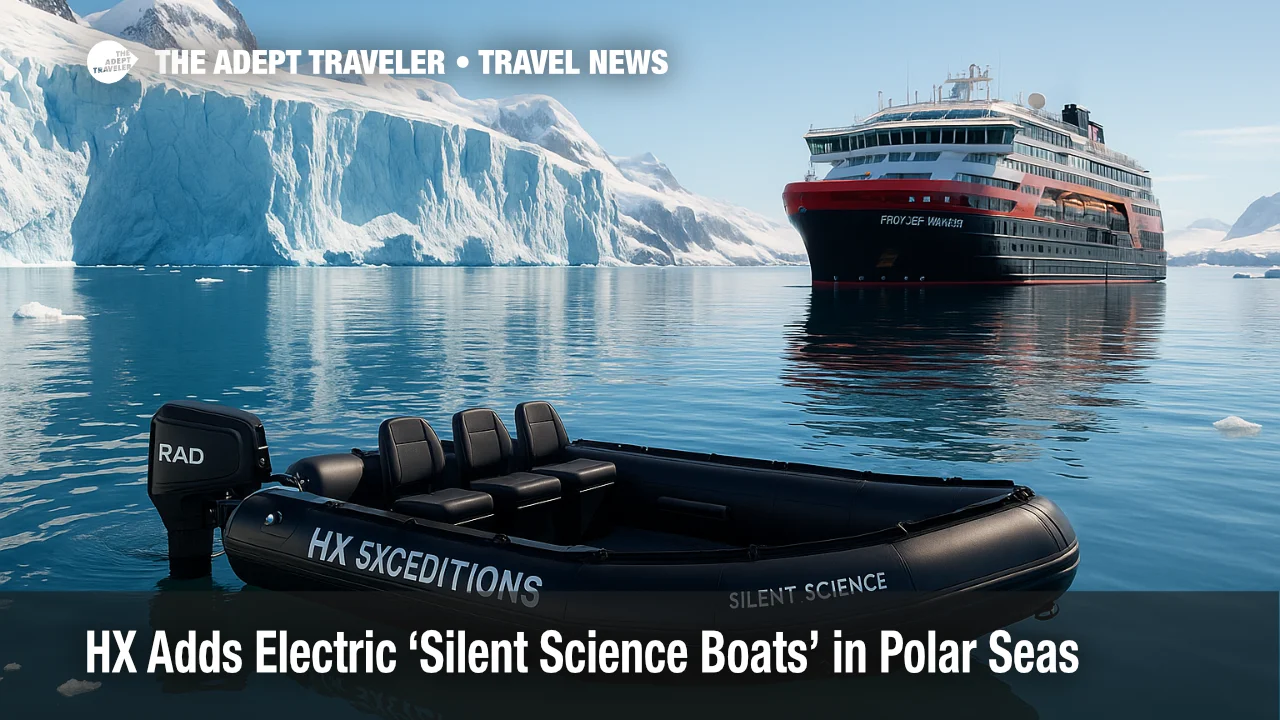HX Adds Electric 'Silent Science Boats' in Polar Seas

Key points
- Two electric MK 5 boats debut on HX polar ships
- RAD 40 electric drives cut underwater noise
- Built to IAATO safety and environmental rules
- Used for guest science, wildlife studies, research
- Part of plan to phase out petrol Zodiacs
HX Expeditions has launched two fully electric 'silent science boats' for small-group operations in the Arctic and Antarctic. Debuting in October 2025 on MS Fram and hybrid-battery MS Fridtjof Nansen, the new MK 5 vessels use RAD Propulsion's RAD 40 electric drive to reduce underwater noise during wildlife observation and research trips. The boats are intended for guest science outings, expedition-team projects, and visiting researchers. For travelers, the shift means quieter approaches around whales and seabirds, lower local emissions, and added opportunities to participate in guided citizen-science work while staying within strict polar rules.
HX Expeditions | Fleet Upgrade
The company framed the rollout as the first step in replacing traditional petrol Zodiacs with cleaner, quieter craft across its fleet. Scientists emphasize that underwater noise can interfere with communication and feeding behaviors in marine mammals; cutting engine noise helps observers approach cautiously and record more natural behavior. The RAD 40 electric system delivers outboard performance without combustion noise, supporting slow, precise maneuvering for wildlife-first operations.
Latest developments
HX said the boats are designed within International Association of Antarctica Tour Operators (IAATO) regulations, which set safety and environmental standards for shore landings and small-craft activity. The new units will initially be assigned to MS Fram and MS Fridtjof Nansen, expanding to additional ships as the fleet transitions away from petroleum engines.
Analysis
For expedition guests, quieter small-boat rides have two practical benefits. First, they can reduce the chance of startling wildlife, which can improve sighting quality and the integrity of photos, acoustic recordings, and behavioral notes. Second, electric systems simplify low-speed handling, which is useful in narrow coves, brash ice, and around sensitive haul-outs.
Background IAATO rules, adopted by member operators, set limits on approach distances and outline best practices for zodiac operations to minimize disturbance to wildlife in Antarctica. Electric small-boat drives complement those standards by reducing acoustic output near the animals travelers come to see.
Expect HX to scale electric craft as charging and spares logistics mature across itineraries. In the near term, travelers should look for briefings on embarkation day that explain small-boat etiquette, including approach speeds, voice levels, and camera readiness to keep idling and repositioning to a minimum.
Final thoughts
The addition of electric 'silent science boats' strengthens HX Expeditions' polar program with lower-noise, lower-emission operations. For guests, the payoff is clearer, calmer wildlife encounters and more credible citizen-science opportunities, aligned with IAATO standards and supported by RAD 40 electric propulsion.
